
There were two places at Austin, TX that I wanted to visit.
One was the Half Pint Prairie at the University of Texas at Austin’s campus (a student project from the Covid years that turned a small plot smack-dab in the middle of the city into a mini prairie), and the other was UT Austin’s Lady Bird Johnson Wildflower Center, which was around 30 minutes south of the main campus. I gave up on my chance at the first after spending 20 min vainly trying to find any parking at all, but I did manage to spend a couple of hours at the botanical garden.
Due to the fact it was still winter, there were no colorful spring wildflowers at the center, nor was there much to see beyond the trees, to be honest. But that did not stop hordes of school children from descending on the place, shepherded by their patient teachers. However, the center had allowed the ghostly remnants of their ornamental grasses to remain on the grounds, and as I gazed at them I could only wonder at how beautiful and colorful the grounds must have been during late summer and fall last year.
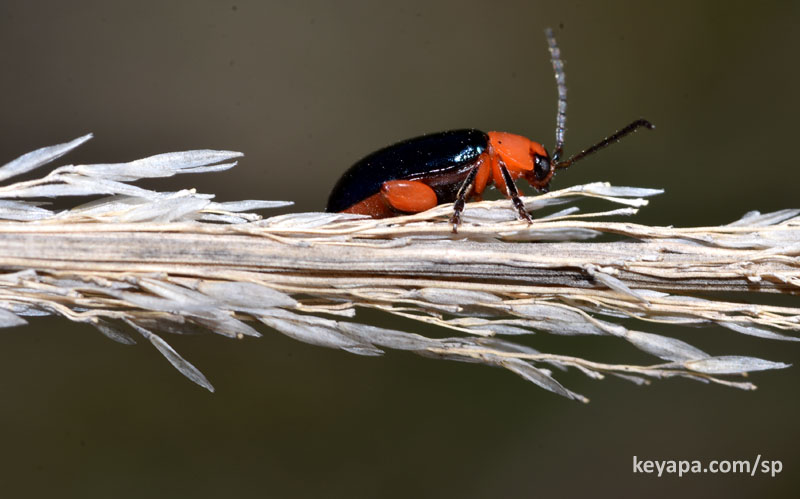
In particular, the center seems to have a fondness for the Muhlenbergia ornamental grasses, and on their grounds I found the brown remnants of various species of this genus, from the mat-forming Muhlenbergia schreberi, whose flattened remains were like dried turf grass; to the small Muhlenbergia reverchonii and Muhlenbergia dubia, whose dried clumps were arranged in neat rows; and to the mid-sized Muhlenbergia capillaris, a familiar species even in far-off Florida.
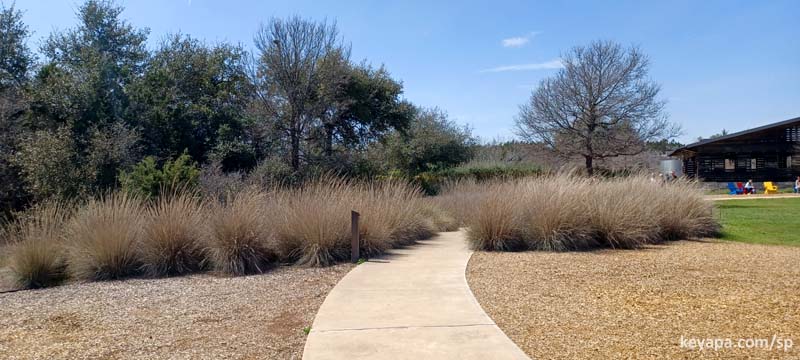
But it was on the large Muhlenbergia lindheimeri that the center lavished its most attention. I would not be exaggerating if I were to say that this species is probably the foundational plant of the more open areas of the park, as row upon row of the species graced the open fields and alongside the many foot paths looping around the park.
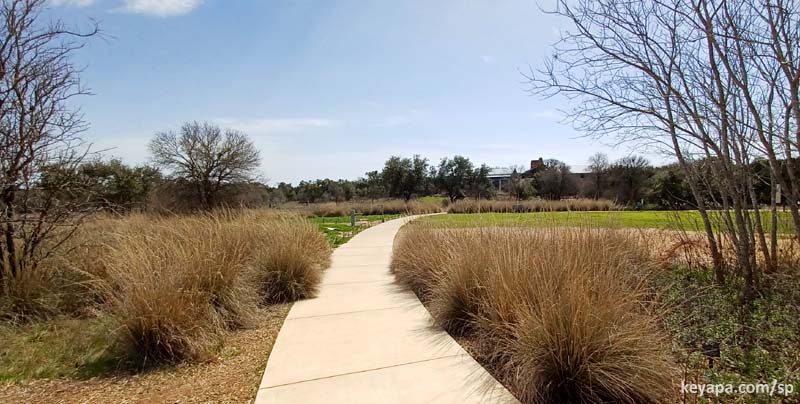
Most of the species in genus Muhlenbergia are native to North America, and are part of the subfamily Chloridoideae. The genus has around 183 species in it and is interesting because it has both C4 and C3 plants, with the C4 plants sporting photosynthetic adaptations that allow them to tolerate hotter and drier environments. M. capillaris for example, is a C4 grass, and so is M. lindheimeri. This makes sense given that the native range of the latter species is Northern Mexico, and up to the Edward’s Plateau of Texas.
I have to admit that this was the first time I had come face to face with M. lindheimeri, and in fact, I did not know it at all before my trip. This was a shame because it seems like a handsome species, with heights that can reach nearly 2 meters tall, dwarfing its Muhlenbergia cousins. It’s therefore no wonder that it can be used as an ornamental grass, with common names in the area such as big muhly, blue muhly, and Lindheimer’s muhly.
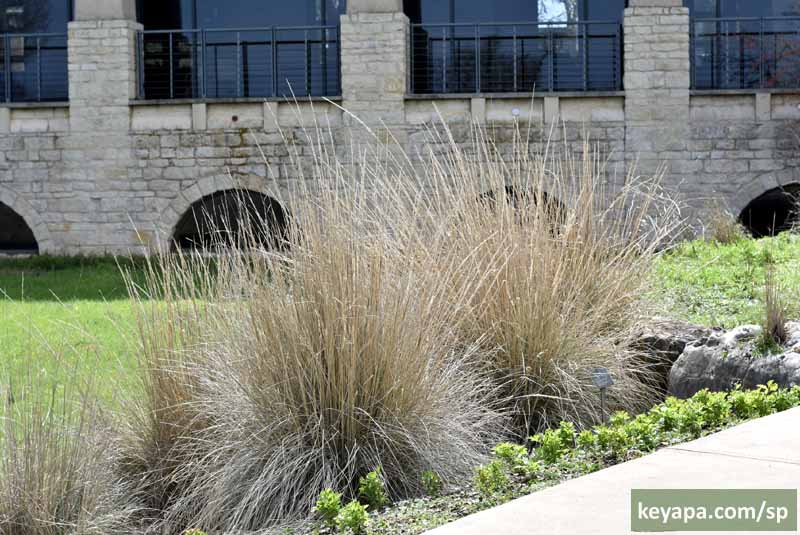
In its dry condition, the ornamental grass looks a bit similar to Trypsacum dactyloides, which is a common ornamental in Florida, mainly due to its size and growth shape. But images from the web show that the M. lindheimeri inflorescence is quite different from the Florida native, with the masses of pinkish-white spathe-like flowerheads surrounding the globular bunch grass like a fluffy cloud. Add in the color from all the other Muhlenbergia specimens and it really is a shame that I hadn’t visited the center at the height of the flowering season.
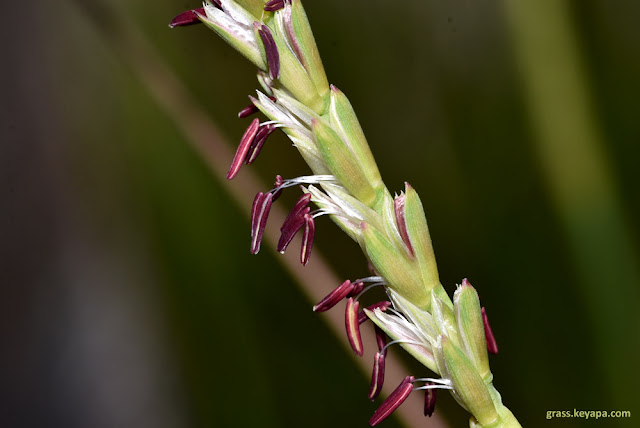
As an ornamental, I personally think Muhlenbergia is one of the best options for people in the region. First of all, the ones offered are native, and thus not only ecologically sound, but also adapted to the area. Secondly, they are relatively large grasses, and thus can be used as foundational plants in the landscape, not to mention having a larger visual impact on viewers. Finally, they are one of the best looking ornamentals that you can get, especially when planted in masses. The sight of rows or groups of these grasses in full flower and waving in the breeze is arresting and spectacular, to say the least. The primary color of the flowerheads is pinkish-red, but using whitish-yellow varieties to balance out the color makes the entire ensemble even more amazing.
My only main caveat to this is that they tend to flower only towards the autumn, and thus you will need supporting ornamentals around them in order to get some color in your landscape during other times. But that is a small price to pay given all the advantages of this ornamental, and I am not surprised at all that the Lady Bird Johnson Wildflower Center has invested so heavily in displaying specimens of this amazing genus.


Leave a Reply